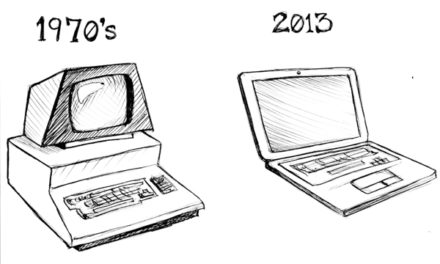A few weeks ago, I read an article titled, “What the Best Education Systems are Doing Right.” As I was reading, I couldn’t help but notice what the key messages of the article were. In short, South Korea and Finland have created systems of education that we should all consider as examples for the future. Before I go any further, I want people to know why I am interested in the American education system. My family immigrated to the United States from Pakistan when I was seven years old. Leaving their country, my parents decide to come to the United States. Why? For better educational opportunities for me and my sisters. Because education has been very important to my parents, and it’s been important to me as well.
Going back to the article, what are Finland and South Korea doing right? Essentially, the Korean model focuses on hard work. Students are in school year-round, and the educational culture promotes diligence, leaving no room for failure. Finland has a different model that believes in intrinsic motivation and activities outside the classroom. The culture is one of low stress, and learning from a wide variety of experiences outside the classroom is encouraged. Two different models that promote different ways of learning are both succeeding. What’s the secret? Finland and South Korea share one key educational ideology: “a deep respect for both the teacher and the student’s academic accomplishments.” Not everyone can become a teacher in Finland. One in 10 applicants is accepted to teaching programs. In South Korea, a teacher is respected and viewed with high-esteem. We are also fortunate to have dedicated teachers who prepare students to become engaged citizens of the world. These individuals should be held with the highest esteem in our society.
The American education system has many values that students should be proud of. Students learn to live in a pluralistic society and have coined the term diversity as one of the most talked about qualities of the American educational system. Most students have engaged in dialogue with peers who come from different countries, ethnicities and racial backgrounds. Education is compulsory in all states and free for all students. The government funds public education and promotes literacy for everyone. Why, then, is this not considered one of the best education systems in the world?
There are a few faults in our system that can be changed. The first and most important is the way teachers are viewed in society. I am disheartened when I hear the phrase “those who can, do; those who can’t, teach.” Why create such a culture where the ones who impart knowledge are the ones whom you don’t value? The profession of teaching should not be looked down upon. It is teachers who play a large role in shaping the leaders of tomorrow. It is the teacher who models hard work, creativity, caring and perseverance. It is the teacher who thinks about teaching and takes on the task of making sure all of his/her students succeed. While I agree that many have encountered bad teachers, I would encourage you to think about the majority of the teachers, who have actually empowered you.
Another fault in the system is the idea of labeling and tracking. Labeling students begins at a very young age. Students are tested and immediately classified as gifted, slower learners, smart, lazy or unmotivated. While this can be beneficial to those who are labeled as bright students, it is a disadvantage to those who are labeled as slower learners or learners who are below average. “Gifted” students are sent to”special classes” to help them move up the ladder quickly. On the other hand, many “slower learners” are not given attention because of larger class sizes or less adequate resources.
Often, adults presume that young students don’t comprehend the meaning of these labels because they are children. Director of Educational Equity and Scholarship at the Ford Foundation Jeannie Oakes shows in her work “Keeping Track: How Schools Structure Inequality” that children who are assigned the low track courses have lower self-esteem in general. Also, the notion that students learn better with those most similar to them is detrimental to the children’s needs. While this might help those who are gifted and talented, it hinders the performances of those at lower levels. The low-tracked students have unequal opportunities and generally are racially stratified. Schools limit the opportunities of students in low track levels. High and low track teachers are allocated different resources and curriculum.
Oakes also shows that low tracked students are not given the same opportunities outside of class with activities such as field trips and tournaments. Students on the low track level are presented with the path towards vocational training. The goals of vocational education are so it increases the economic opportunities for the poor and minority groups by providing them with specific, marketable occupational skills.
Tracking students for the benefit of society is one of the most detrimental problems of the system. This is a capitalistic society and essentially structured like a pyramid in which there needs to be a bottom, middle and top. Therefore, tracking is essential for society to have people to take on vocational jobs in the future. Where is the upward mobility then? The answer is there is no upward mobility, with a few exceptions. While tracking cannot be taken away completely, because the assumption is that different students do require different pathways to learn, the assumptions people make can be turned around. The assumption that we need to create classrooms with homogeneity so that it will be helpful for both the teachers and students is not true. Rather, it hinders the opportunities available for both of them.
The question then becomes what is the other option? Our system has diverse students that Finland and South Korea do not have to respond to. However, I think we can change the culture of education in the United States. All students should be taught how society functions, the issues that we face in this world as well as given a chance to use their skills to succeed. We should make schools the center of each community. Teachers should be given the upmost respect in American society with resources and time. This could be made into one of the most sought out professions but only if the culture allows it. Phrases such as “those who can, do; those who can’t, teach” should not be a part of this culture. The culture creates the system, and we can create the new system together.
I have studied in the United States for most of my life. The education that I received here will always be valued in my heart. But as a student, there were a few faults that I observed while growing up. I was put in the high track while my sister was not. We had a different education path. However, she was blessed with committed teachers that kept her going to prepare her for the real world.
As a student at this University, I urge you to value your teachers, a few of which have played a part in getting you to Emory University or have shaped your career path. We, as a student body, can change the culture at Emory and challenge others to value their educators too. This will lead to a change in our children’s minds and may lead to a change in American society overall.
Falak Mawani is a College senior from Memphis, Tennessee.
The Emory Wheel was founded in 1919 and is currently the only independent, student-run newspaper of Emory University. The Wheel publishes weekly on Wednesdays during the academic year, except during University holidays and scheduled publication intermissions.
The Wheel is financially and editorially independent from the University. All of its content is generated by the Wheel’s more than 100 student staff members and contributing writers, and its printing costs are covered by profits from self-generated advertising sales.







